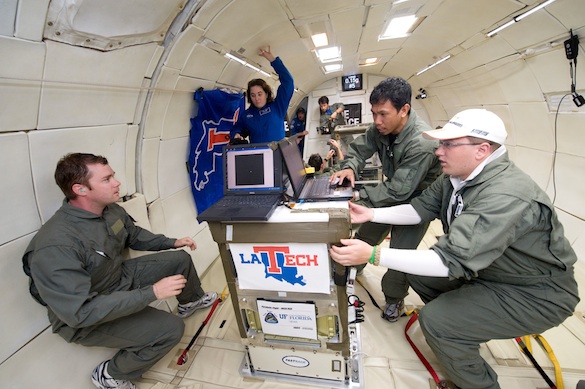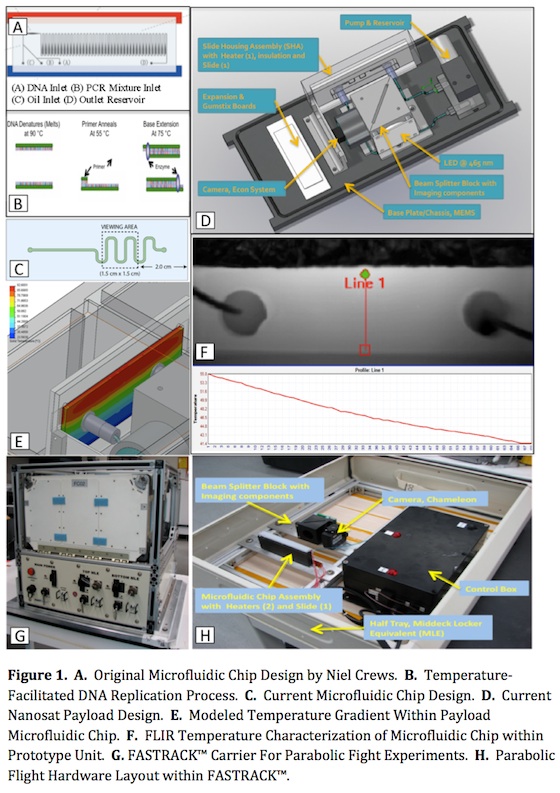Monitoring Radiation-Induced DNA Degradation
PI: Howard G. Levine, NASA/Kennedy Space Center
PI: Howard G. Levine, NASA/Kennedy Space Center

- TA06 Human Health, Life Support and Habitation Systems
The project's goal is to continuously pump DNA within a buffer/oil carrier solution into a microfluidic chip along with a Polymerase Chain Reaction (PCR) mixture. The mixture passes through a temperature gradient PCR microchannel consisting of 40 DNA amplification cycles. Thermal cycling occurs as the mixture travels serially through the serpentine microchannel. Precise temperature regulation is thus key to the device's operation, necessitating the assessment of thermal control in the convectionless microgravity environment.
This project leverages research activity with university partners that are leaders in micromanufacturing (LaTech). The proposed effort will take a technology currently at TRL-5 and through the proposed testing under parabolic flight conditions elevate it to TRL-6 by demonstrating its functionality under microgravity conditions. After a cubesat/ISS flight (targeting 2014), the technology will be further elevated to TRL-7.
Commercial applications of this technology pertain to the development of miniaturized medical equipment such as diagnostic instruments used by emergency responders and personalized caregivers.
The three primary goals of the Sept. 2011 parabolic flight campaign were to: (1) demonstrate the microfluidic slide's fluid circulation within various gravity environments (microgravity, 2G, and transitional gravity environments), (2) study the effects of the microgravity environment on the thermal gradients within the micro device as it can possibly have negative effects on PCR when proper thermal settings are altered, (3) evaluate whether a newly fabricated prototype camera is capable of meeting all project requirements in a microgravity environment before it is implemented in its final cubesat/ISS configuration.
The MEMS Radiation hardware was loaded inside the FASTRACK payload platform using Middeck Locker Equivalent (MLE) half trays for safe stowage during flight operations. The experimental setup included a Unit Control Box that housed the system's thermal controls, temperature display, fluid pump and manual system control. A microfluidic chip assembly with Minco film heaters was alternately imaged by the FLIR thermal imaging camera and a Bionetics designed prototype fluorescent imaging system on consecutive flight days.

Technology Details
-
Selection DateAFO1 (May 2011)
-
Program StatusCompleted
- 3 Parabolic
Development Team
-
PIHoward G. Levine
-
Organization
-
SponsorNASA
-
PartnersThe KSC Engineering Support Contract, Louisiana Tech University

